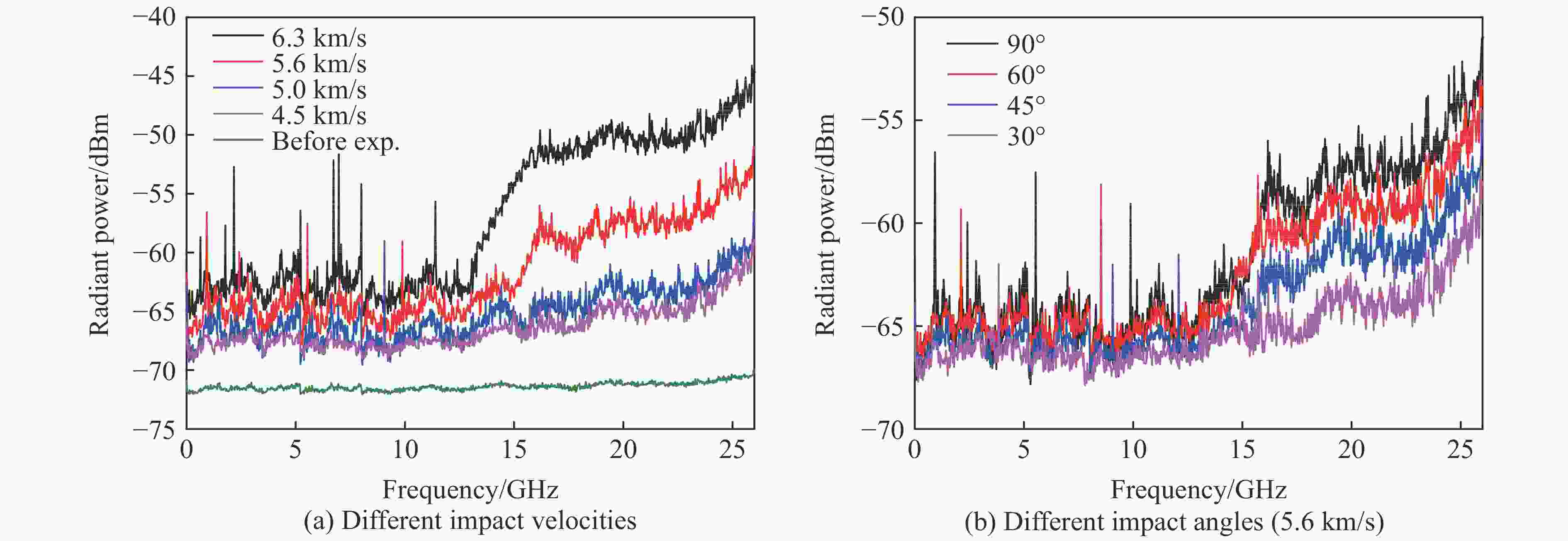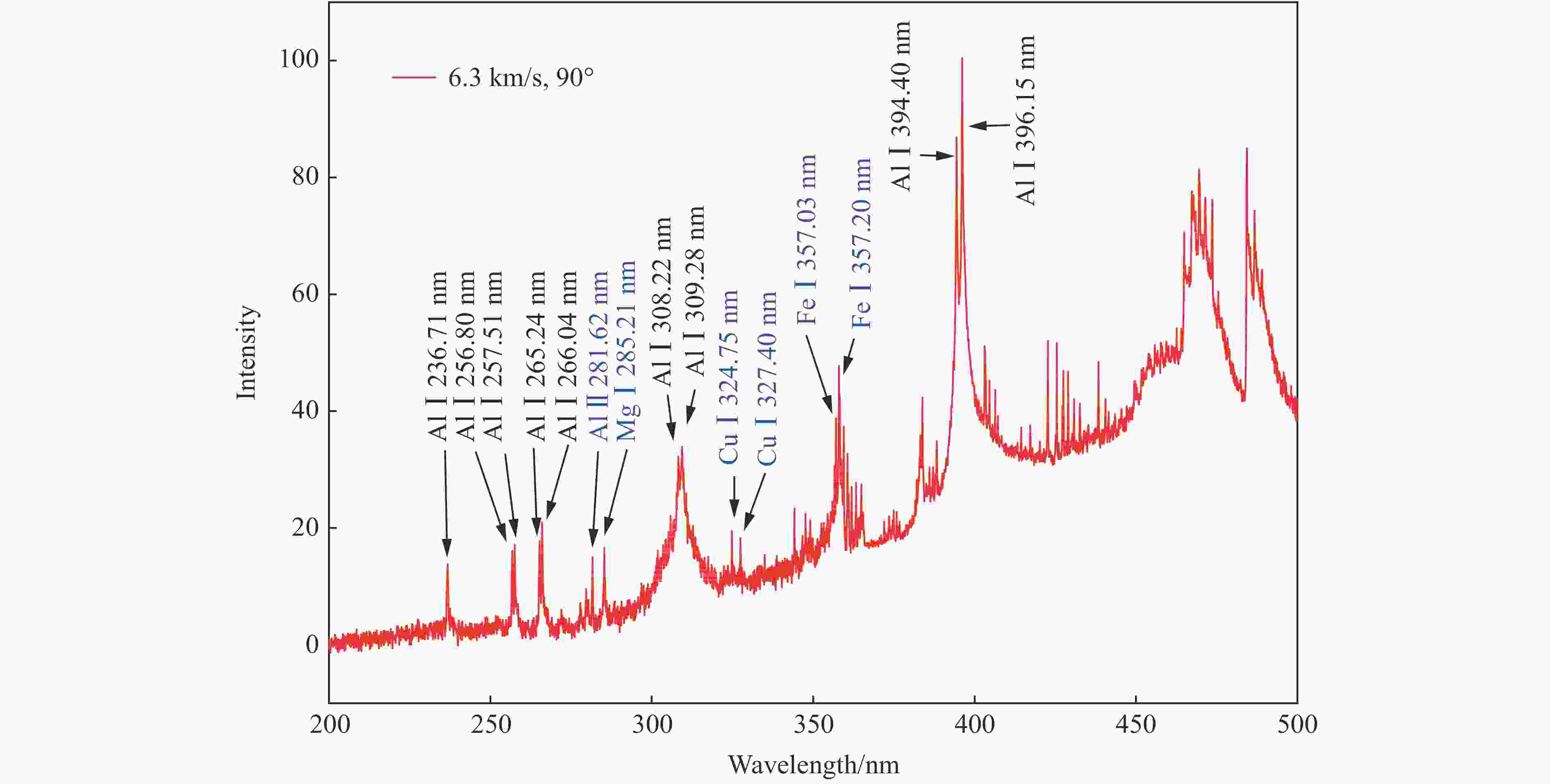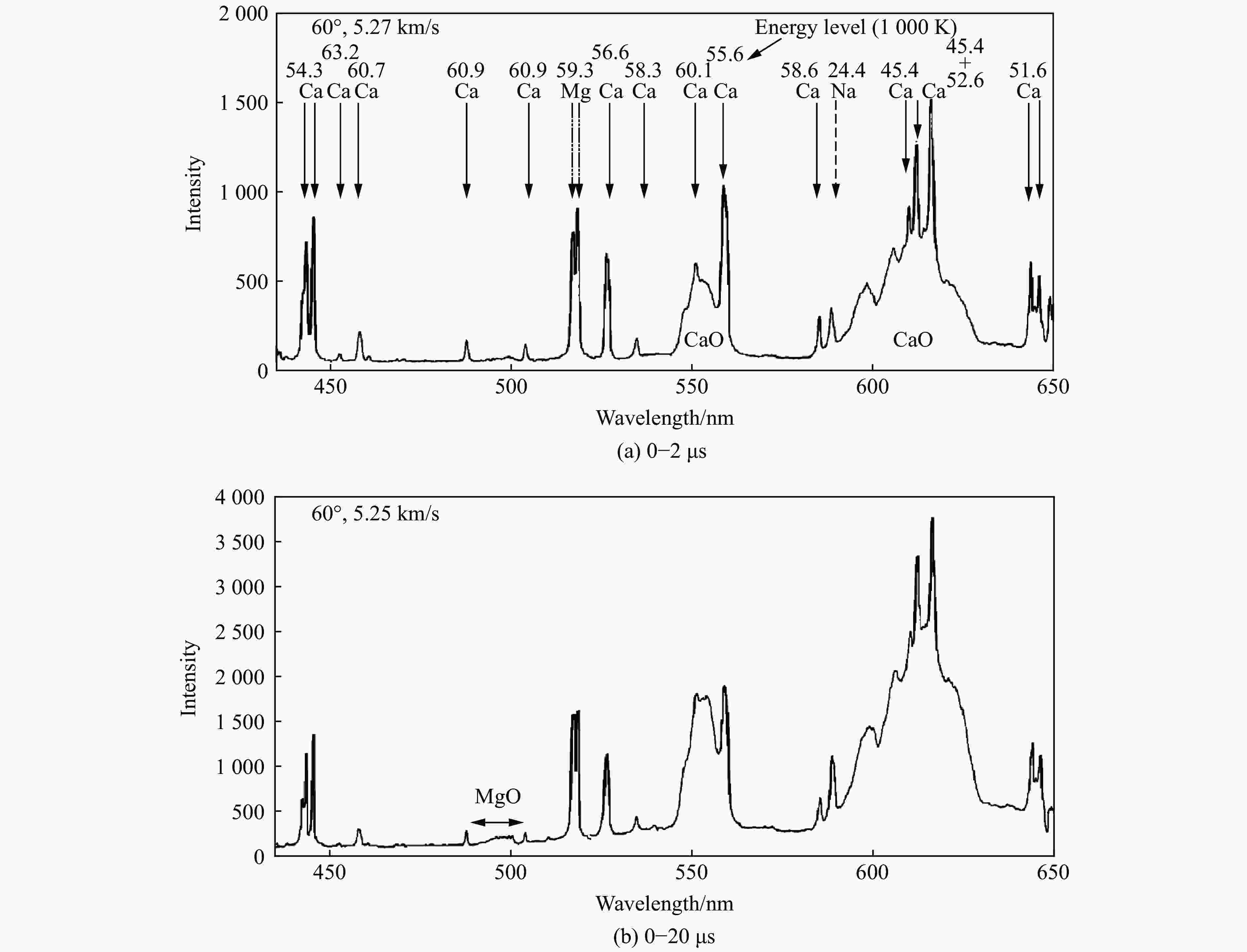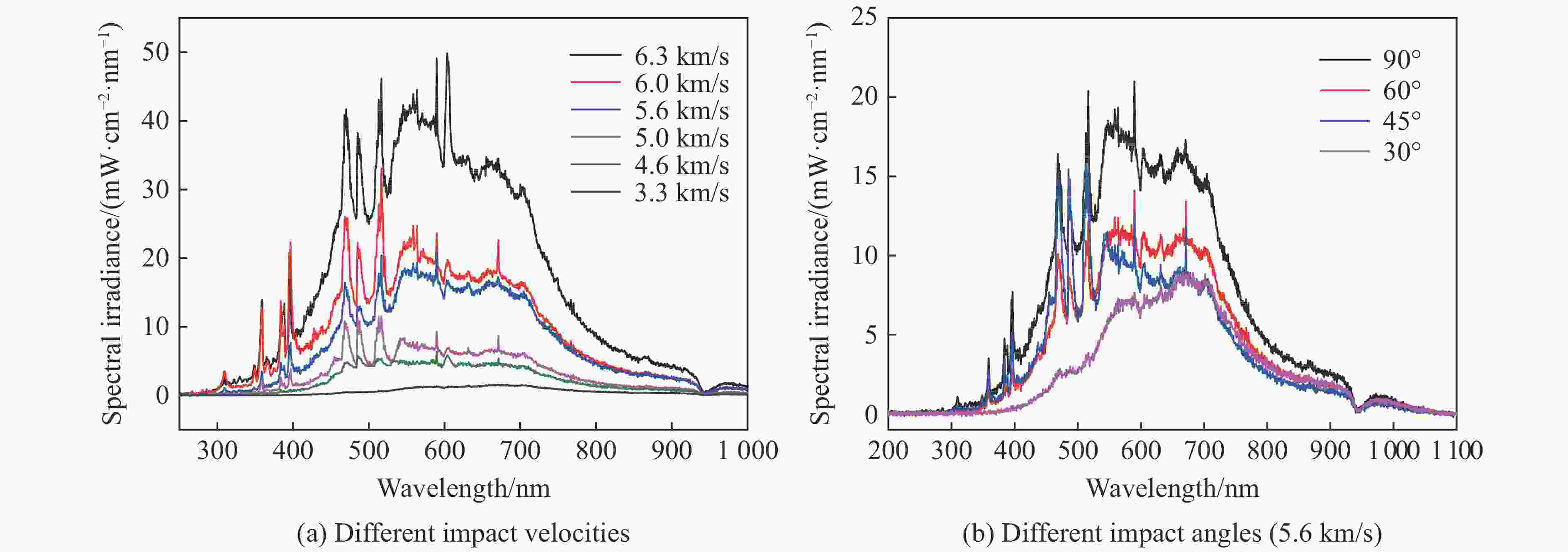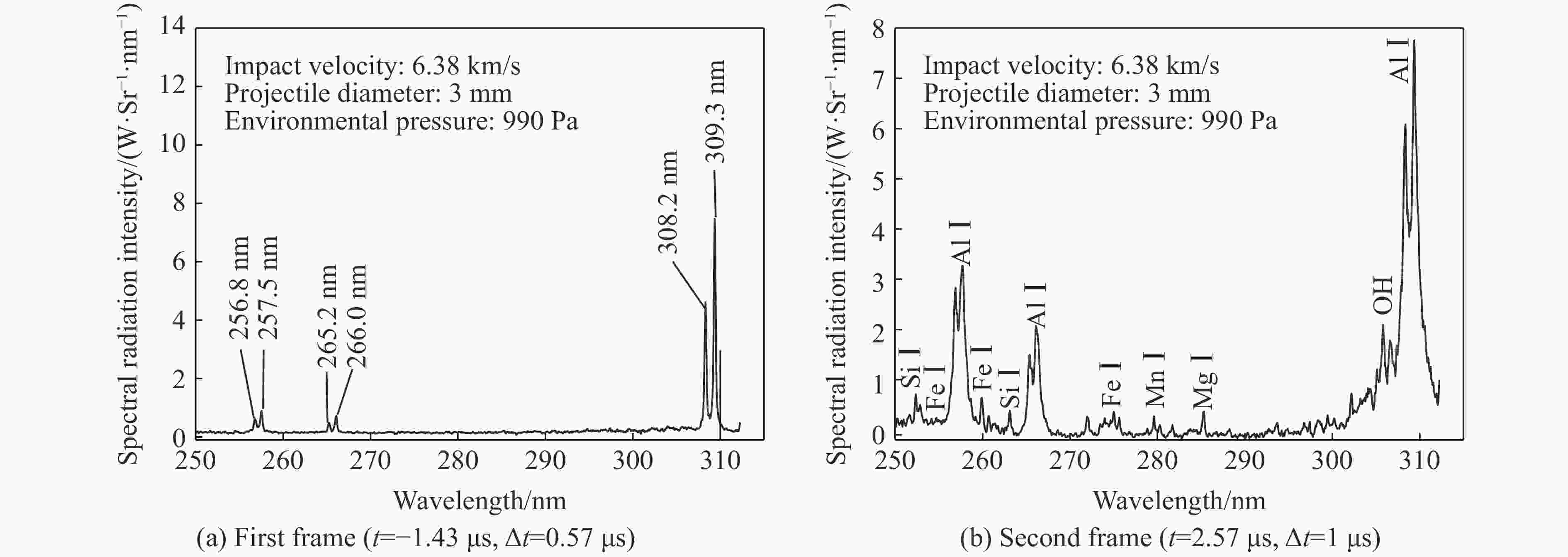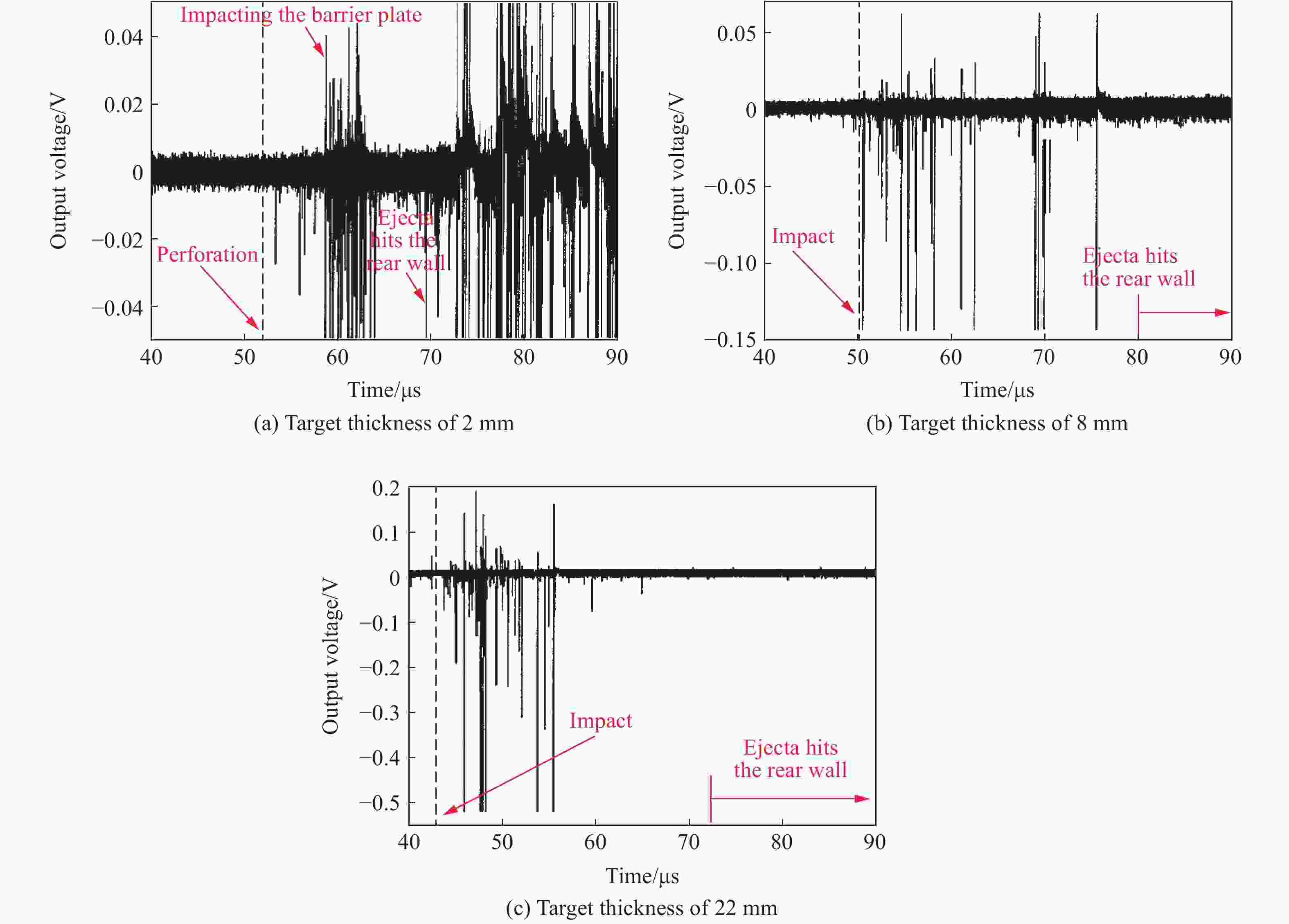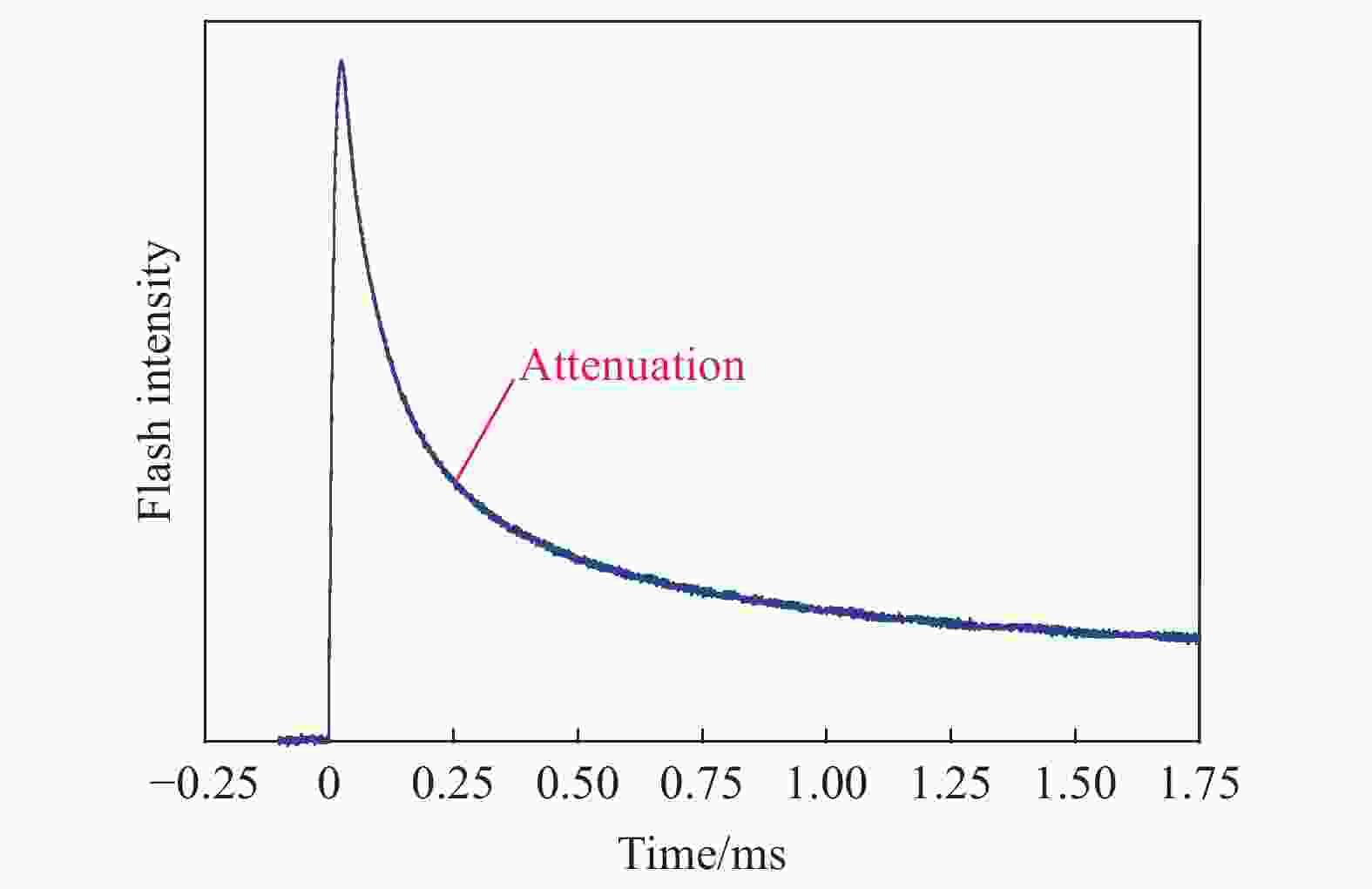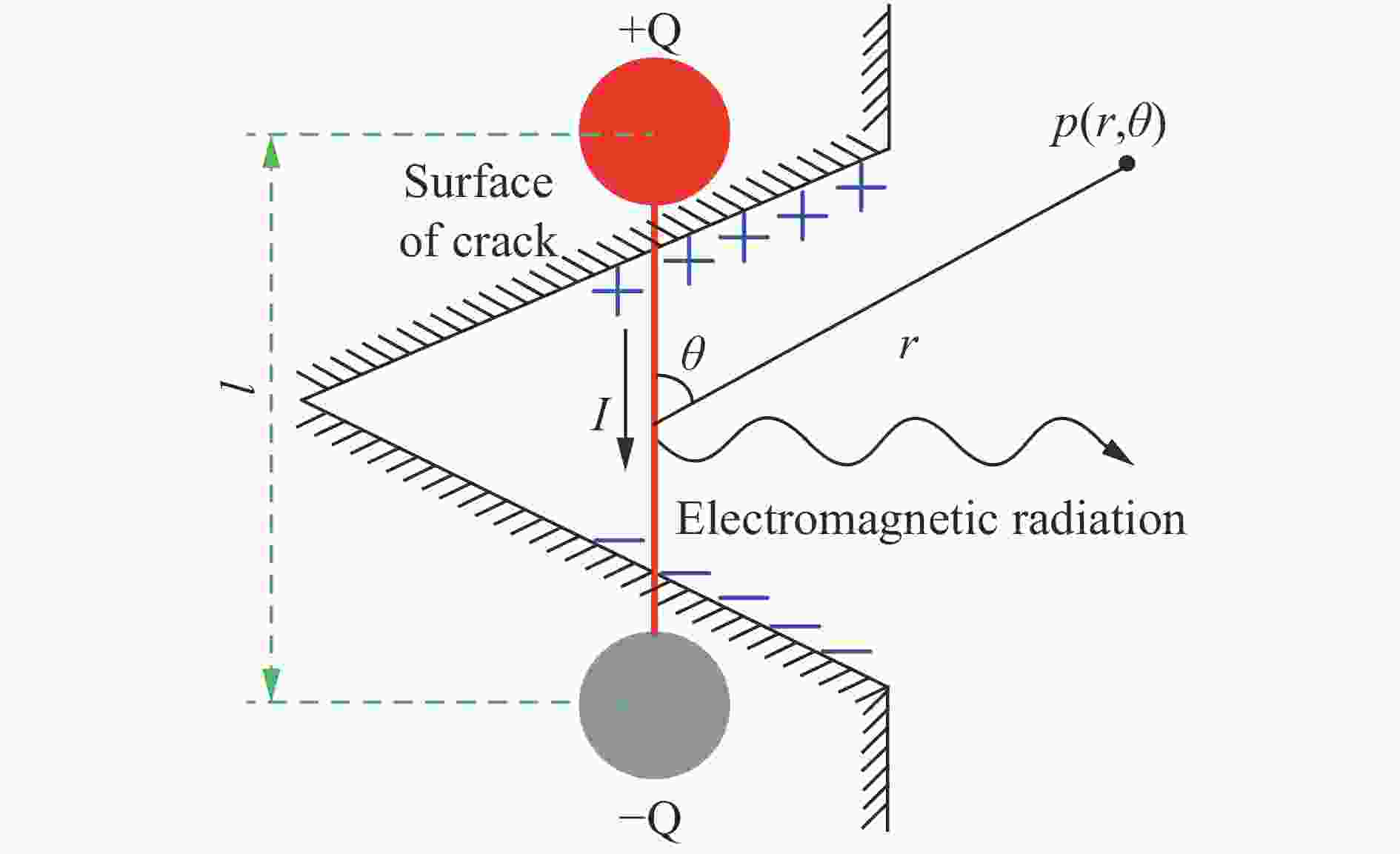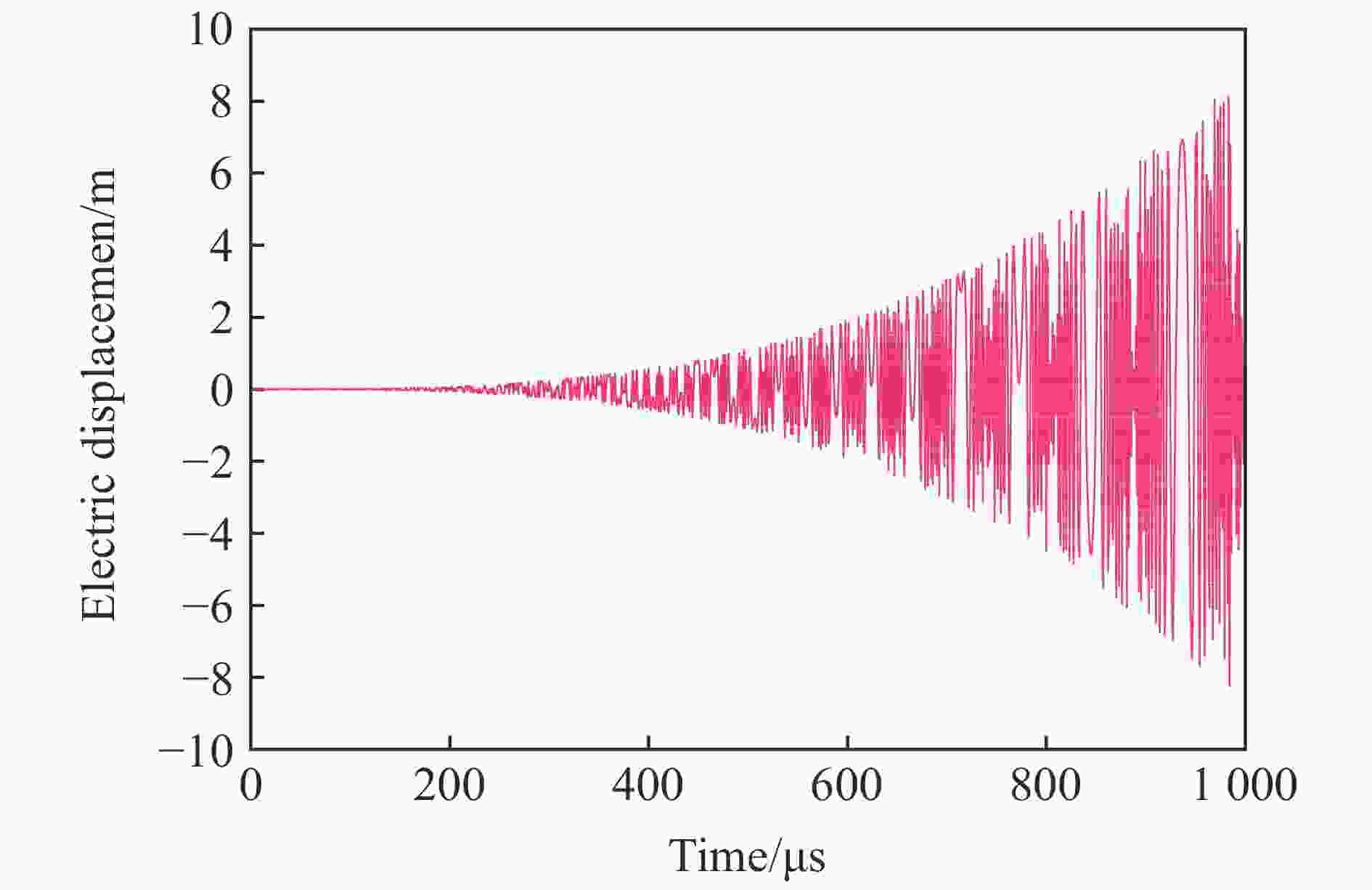The electromagnetic radiation produced by hypervelocity impact
-
摘要: 超高速碰撞产生的电磁辐射是固体物质在强冲击作用下的重要物理响应,在深空探测、航天器对空间碎片的防护设计、武器毁伤评估应用广泛。本文中概述了超高速碰撞产生的电磁辐射现象,总结了不同碰撞条件下,超高速碰撞产生微波和闪光的时频特性;从超高速碰撞产生材料破碎和产生等离子体两个方面,分析了超高速碰撞产生微波的辐射模型;归纳了超高速碰撞下的发光机理,并阐述了超高速碰撞产生连续光谱和线谱的辐射模型,指出了超高速碰撞产生电磁辐射研究存在的不足与发展趋势。Abstract: The electromagnetic radiation from hypervelocity impact is an important physical phenomenon of solid matter under strong impact loadings, and the research results have important application value in fields of deep space exploration, protection design of spacecraft against space debris, assessment of weapon damage, etc. In this paper, the electromagnetic radiation caused by hypervelocity impact was briefly summarized. The time-frequency characteristics of microwave and flash by hypervelocity impact under various collision conditions were respectively provided. The radiation models of microwave generated by hypervelocity impact were analyzed from two aspects of material fragmentation and plasma phase transition. The luminescence mechanisms during hypervelocity impact were described as a whole, and the radiation models of continuous spectrum and line spectrum were performed. The shortcomings and development trend of electromagnetic radiation by hypervelocity impact were pointed out. The results show that the intensity and frequency of microwave and flash are closely dependent on the target thickness, impact material, environmental pressure as well as collisional velocity and angle. The microwave is in the form of pulses lasting from a few to hundreds of microseconds. The intensity of the flash, however, accumulates rapidly and then decays slowly. When the plasma is not accomplished during the hypervelocity impact, the microwave radiation is mainly formed because of the movement of ionized debris. Once the plasma is formed, the effects of the collision radiation in the plasma, namely the bremsstrahlung and recombination radiation, and the expansion of the plasma should also be taken into account, and the specific spectrum lies on the characteristic parameters of plasma. In vacuum, only the gasification and plasma due to the impact are necessary to be considered in the flash spectrum, while the gasification and even plasma phase transition resulted from the ablation between the gas and debris should be involved at high environmental pressure.
-
Key words:
- hypervelocity impact /
- electromagnetic radiation /
- plasma /
- flash /
- microwave
-
表 1 铝原子和铝离子的共振线
Table 1. Resonance lines of aluminum atom and aluminum ion
元素 跃迁能级 波长/nm 对基态的能量/eV Al Ⅰ 3s23p2P1/2~3s23d2D3/2 308.215 4.02 Al Ⅰ 3s23p2P1/2~3s24s2S1/2 394.401 3.15 Al Ⅱ 3s21S0~3s3p3P2 265.007 4.67 Al Ⅱ 3s21S0~3s3p3P1 266.916 4.65 -
[1] 经福谦. 超高速碰撞现象 [J]. 爆炸与冲击, 1990, 10(3): 279–288.JING F Q. Hypervelocity impact phenomena [J]. Explosion and Shock Waves, 1990, 10(3): 279–288. [2] PERKINS M A, SIMPSON J A, TUZZOLINO A J. A cometary and interplanetary dust experiment on the Vega spacecraft missions to Halley’s Comet [J]. Nuclear Instruments and Methods in Physics Research A, 1985, 239(2): 310–323. DOI: 10.1016/0168-9002(85)90731-4. [3] LEDERER S M, JENSEN E, FANE M, et al. Unveiling clues from spacecraft missions to comets and asteroids through impact experiments [C] // Division for Planetary Sciences Meeting Abstracts, 2016: 331.01 https://ui.adsabs.harvard.edu/abs/ 2016DPS....4833101L. [4] A’HEARN M F, BELTON M J S, DELAMERE A, et al. Deep impact: a large-scale active experiment on a cometary nucleus [J]. Space Science Reviews, 2005, 117(1−2): 1–21. DOI: 10.1007/s11214-005-3387-3. [5] ERNST C M, SCHULTZ P H. Evolution of the deep impact flash: implications for the nucleus surface based on laboratory experiments [J]. Icarus, 2007, 190(2): 334–344. DOI: 10.1016/j.icarus.2007.03.030. [6] CRAWFORD D A, SCHULTZ P H. Laboratory observations of impact−generated magnetic fields [J]. Nature, 1988, 336(6194): 50–52. DOI: 10.1029/91JE02012. [7] ANZ-MEADOR P. Orbital debris quarterly news [R]. Texas: NASA Oribital Debris Program Office, 2020. [8] WU Q, ZHANG Q M, LONG R R, et al. Potential space debris shield structure using impact-initiated energetic materials composed of polytetrafluoroethylene and aluminum [J]. Applied Physics Letters, 2016, 108(10): 101903. DOI: 10.1063/1.4943584. [9] ZHANG P L, GONG Z Z, TIAN D B, et al. Comparison of shielding performance of Al/Mg impedance-graded-material-enhanced and aluminum whipple shields [J]. International Journal of Impact Engineering, 2019, 126: 101–108. DOI: 10.1016/j.ijimpeng.2018.12.007. [10] FLETCHER A, MATHIAS D L, CLOSE S. Susceptibility of spacecraft to impact-induced electromagnetic pulses [C] // 2015 Annual Reliability and Maintainability Symposium. 2015: 1−6. DOI: 10.1109/RAMS.2015.7105118. [11] THOMSON G M, MCNEIR M R. Impact flash: a tool for rapid battle damage assessment [C] // Infrared Technology and Applications XXX. 2004, 5406: 690−700. DOI: 10.1117/12.538654. [12] LAWRENCE R J, REINHART W D, CHHABILDAS L C, et al. Spectral measurements of hypervelocity impact flash [J]. International Journal of Impact Engineering, 2006, 33(1-12): 353–363. DOI: 10.1016/j.ijimpeng.2006.09.010. [13] RUDOLPH M. Review of radio frequency emission from hypervelocity impact plasmas [J]. Procedia Engineering, 2013, 58(1): 409–417. DOI: 10.1016/j.proeng.2013.05.047. [14] SUGITA S, SCHULTZ P H, ADAMS M A. Spectroscopic measurements of vapor clouds due to oblique impacts [J]. Journal of Geophysical Research Planets: E, 1998, 103(8): 19427–19441. DOI: 10.1029/98je02026. [15] TAKANO T, MUROTANI Y, MAKI K, et al. Microwave emission due to hypervelocity impacts and its correlation with mechanical destruction [J]. Journal of Applied Physics, 2002, 92(9): 5550–5554. DOI: 10.1063/1.1513885. [16] MA Z X, SHI A H, LI J L, et al. Radiation mechanism analysis of hypervelocity impact ejecta cloud [J]. International Journal of Impact Engineering, 2020, 141: 103560. DOI: 10.1016/j.ijimpeng.2020.103560. [17] SUGITA S, SCHULTZ P H. Interactions between impact-induced vapor clouds and the ambient atmosphere: 1. spectroscopic observations using diatomic molecular emission [J]. Journal of Geophysical Research: E, 2003, 108(6): 5051. DOI: 10.1029/2002je001959. [18] CLOSE S, LINSCOTT I, LEE N, et al. Detection of electromagnetic pulses produced by hypervelocity micro particle impact plasmas [J]. Physics of Plasmas, 2013, 20(9): 2102. DOI: 10.1063/1.4819777. [19] HEW Y M, GOEL A, CLOSE S, et al. Hypervelocity impact flash and plasma on electrically biased spacecraft surfaces [J]. International Journal of Impact Engineering, 2018, 121: 1–11. DOI: 10.1016/j.ijimpeng.2018.05.008. [20] CLOSE S, KELLEY M, FLETCHER A, et al. RF signatures of hypervelocity impacts on spacecraft [C] // 3rd AIAA Atmospheric Space Environments Conference. 2011: 3150. DOI: 10.2514/6.2011-3150. [21] SUGITA S, SCHULTZ P H. Spectroscopic characterization of hypervelocity jetting: comparison with a standard theory [J]. Journal of Geophysical Research Planets: E, 1999, 104(12): 30825–30845. DOI: 10.1029/1999JE001061. [22] TAKANO T, IKEDA H, MAEDA T. Consideration of the mechanism of microwave emission due to material destruction [J]. Journal of Applied Physics, 2010, 108(8): 083722. DOI: 10.1063/1.3499291. [23] JEAN B, ROLLINS T L. Radiation from hypervelocity impact generated plasma [J]. AIAA Journal, 2012, 8(10): 1742–1748. DOI: 10.2514/3.5984. [24] MA Z X, SHI A H, LI J L, et al. Radiation evolution characteristics of the ejecta cloud produced by aluminum projectiles hypervelocity impacting aluminum plates [J]. International Journal of Impact Engineering, 2020, 138: 103480. DOI: 10.1016/j.ijimpeng.2019.103480. [25] MA Z X, HUANG J, SHI A H, et al. Analysis technique for ejecta cloud temperature using atomic spectrum [J]. International Journal of Impact Engineering, 2016, 91: 25–33. DOI: 10.1016/j.ijimpeng.2015.12.008. [26] MA Z X, HUANG J, SHI A H, et al. The analysis technique for ejecta cloud temperature based on atomic spectrum [J]. Procedia Engineering, 2015, 103: 357–364. DOI: 10.1016/j.proeng.2015.04.033. [27] ZHANG K, ZHANG Q M, LONG R R. The experiment study on flash spectrum produced by hypervelocity impact [J]. Applied Mechanics & Materials, 2015, 782: 197–203. DOI: 10.4028/www.scientific.net/AMM.782.197. [28] XUE Y J, ZHANG Q M, LIU D Y, et al. Hypersonic impact flash characteristics of a long-rod projectile collision with a thin plate target [J]. Defence Technology, 2021, 17(2): 368–376. DOI: 10.1016/j.dt.2020.02.011. [29] ZHANG Q M, GONG L F, MA Y F, et al. The electromagnetic properties of plasma produced by hypervelocity impact [J]. Physics of Plasmas, 2018, 25(2): 022906. DOI: 10.1063/1.5009067. [30] LI H W, HAN J W, CAI M H, et al. The analogue experiment of small space debris impact inducing solar array discharge [J]. International Journal of Impact Engineering, 2020, 143: 103582. DOI: 10.1016/j.ijimpeng.2020.103582. [31] 张凯. 超高速碰撞LY12铝靶产生电磁辐射实验研究[D]. 北京: 北京理工大学, 2016. DOI: CNKI:CDMD:1.1018.811986. [32] ZHANG K, LONG R R, ZHANG Q M, et al. Flash characteristics of plasma induced by hypervelocity impact [J]. Physics of Plasmas, 2016, 23(8): 083519. DOI: 10.1063/1.4960297. [33] LAWRENCE R J, REINHART W D, CHHABILDAS L C, et al. Hypervelocity impact flash at 6, 11, and 25 KM/S [C] // AIP Conference Proceedings. 2006, 845(1): 1349−1352. DOI: 10.1063/1.2263574. [34] DUGGER P, HENDRIX R. Measurements of transient hypervelocity impact phenomena at the AEDC [C] // 32nd Aerospace Sciences Meeting and Exhibit. 1994: 87. DOI: 10.2514/6.1994-87. [35] REINHART W D, THORNHILL T F, CHHABILDAS L C, et al. Temperature measurements of expansion products from shock compressed materials using high-speed spectroscopy [J]. International Journal of Impact Engineering, 2008, 35(12): 1745–1755. DOI: 10.1016/j.ijimpeng.2008.07.062. [36] 石安华, 柳森, 黄洁, 等. 铝弹丸超高速撞击铝靶光谱辐射特性实验研究 [J]. 宇航学报, 2008, 29(2): 715–717. DOI: 10.3873/j.issn.1000-1328.2008.02.061.SHI A H, LIU S, HUANG J, et al. Spectra measurement of radiation produced by aluminum projectiles impacting aluminum targets at hypervelocity speeds [J]. Journal of Astronautics, 2008, 29(2): 715–717. DOI: 10.3873/j.issn.1000-1328.2008.02.061. [37] 石安华, 柳森, 黄洁, 等. 超高速碰撞可见光谱辐射强度测量技术 [J]. 实验流体力学, 2007, 21(4): 83–85. DOI: 10.3969/j.issn.1672-9897.2007.04.017.SHI A H, LIU S, HUANG J, et al. Visible spectral radiant intensity measuring technology for hypervelocity impact phenomena [J]. Journal of Experiments in Fluid Mechanics, 2007, 21(4): 83–85. DOI: 10.3969/j.issn.1672-9897.2007.04.017. [38] MEYER-VERNET N, MAKSIMOVIC M, CZECHOWSKI A, et al. Dust detection by the wave instrument on STEREO: nanoparticles picked up by the solar wind? [J]. Solar Physics, 2009, 256(1−2): 463–474. DOI: 10.1007/s11207-009-9349-2. [39] MEYER-VERNET N, LECACHEUX A, KAISER M L, et al. Detecting nanoparticles at radio frequencies: Jovian dust stream impacts on Cassini/RPWS [J]. Geophysical Research Letters, 2009, 36(3). DOI: 10.1029/2008GL036752. [40] GURNETT D A, KURTH W S, KIRCHNER D L, et al. The Cassini radio and plasma wave investigation [J]. Space Science Reviews, 2004, 114(1−4): 395–463. DOI: 10.1007/s11214-004-1434-0. [41] WARWICK J W, PEARCE J B, EVANS D R, et al. Planetary radio astronomy observations from Voyager 1 near Saturn [J]. Science, 1981, 212(4491): 239–243. DOI: 10.1126/science.212.4491.239. [42] WARWICK J W, EVANS D R, ROMIG J H, et al. Planetary radio astronomy observations from Voyager 2 near Saturn [J]. Science, 1982, 215(4532): 582–587. DOI: 10.1126/science.215.4532.582. [43] MAKI K, TAKANO T, FUJIWARA A, et al. Radio-wave emission due to hypervelocity impacts in relation to optical observation and projectile speed [J]. Advances in Space Research, 2004, 34(5): 1085–1089. DOI: 10.1016/j.asr.2003.02.032. [44] MAKI K, SOMA E, TAKANO T, et al. Dependence of microwave emissions from hypervelocity impacts on the target material [J]. Journal of Applied Physics, 2005, 97(10): 104911. DOI: 10.1063/1.1896092. [45] THOMA K, SCHÄFER F, HIERMAIER S, et al. An approach to achieve progress in spacecraft shielding [J]. Advances in Space Research, 2004, 34(5): 1063–1075. DOI: 10.1016/j.asr.2003.03.034. [46] HERMALYN B, SCHULTZ P H, SHIRLEY M, et al. Scouring the surface: ejecta dynamics and the LCROSS impact event [J]. Icarus, 2012, 218(1): 654–665. DOI: 10.1016/j.icarus.2011.12.025. [47] ERNST C M, SCHULTZ P H. Effect of initial conditions on impact flash decay [C] // Lunar and Planetary Science Conference. 2003: 2020. https://ui.adsabs.harvard.edu/abs/2003LPI....34.2020E. [48] ERNST C M, SCHULTZ P H. Effect of velocity and angle on light intensity generated by hypervelocity [C] // Proceedings, 33rd Lunar and Planetary Science Conference. 2002: 1782. https://ui.adsabs.harvard.edu/abs/2002LPI....33.1782E. [49] BAIRD J K, HOUGH G R, KING T R. Velocity dependence of impact fluorescence [J]. International Journal Of Impact Engineering, 1997, 19(3): 273–276. DOI: 10.1016/S0734-743X(96)00039-5. [50] BURCHELL M J, KAY L, RATCLIFF P R. Use of combined light flash and plasma measurements to study hypervelocity impact processes [J]. Advances in Space Research, 1996, 17(12): 141–145. DOI: 10.1016/0273-1177(95)00772-7. [51] MACCORMACK R W. Investigation of impact flash at low ambient pressures [C] // 6th Symposium on Hypervelocity Impact. 1963: 613−625. [52] EICHHORN G. Analysis of the hypervelocity impact process from impact flash measurements [J]. Planetary and Space Science, 1976, 24(8): 771–781. DOI: 10.1016/0032-0633(76)90114-8. [53] MISRA A. Electromagnetic effects at metallic fracture [J]. Nature, 1975, 254(5496): 133–134. DOI: 10.1038/254133a0. [54] FLETCHER A, CLOSE S, MATHIAS D. Simulating plasma production from hypervelocity impacts [J]. Physics of Plasmas, 2015, 22(9): 093504. DOI: 10.1063/1.4930281. [55] JU Y Y, ZHANG Q M, ZHANG D J, et al. Theoretical model for plasma expansion generated by hypervelocity impact [J]. Physics of Plasmas, 2014, 21(9): 092112. DOI: 10.1063/1.4895592. [56] ZEL’DOVICH Y B, RAIZER Y P. Physics of shock waves and high-temperature hydrodynamic phenomena [M]. Chicago: Courier Corporation, 2002. [57] GHISELLINI G. Radiative processes in high energy astrophysics [M]. New York: Springer, 2012: 873. DOI: 10.1007/978-3-319-00612-3. -






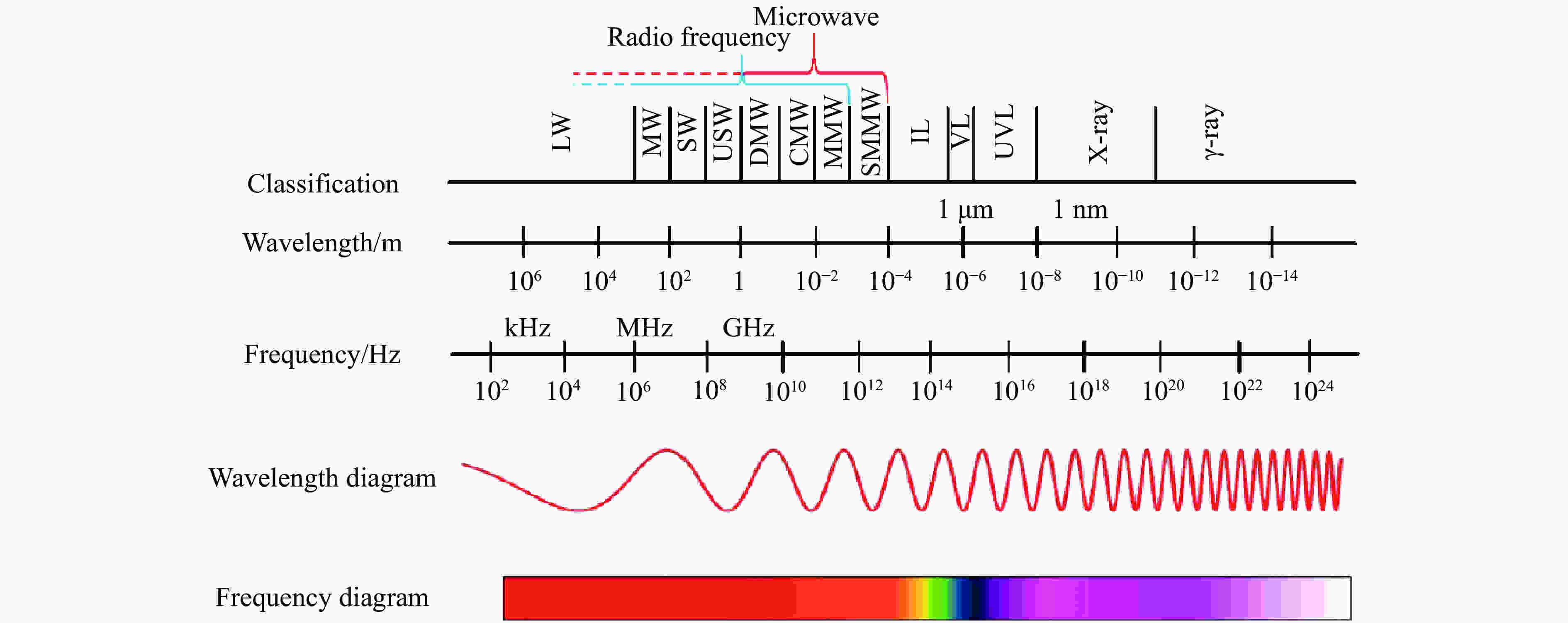
 下载:
下载:
